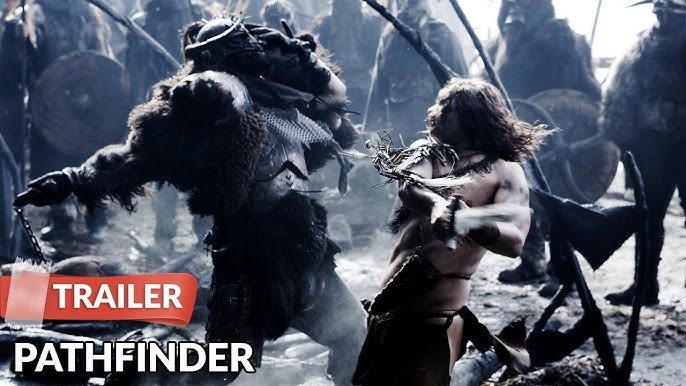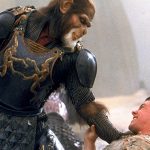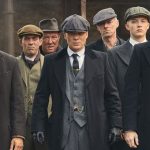Pathfinder (2007)

“Pathfinder,” directed by Marcus Nispel and written by Laeta Kalogridis, is a 2007 American epic action film that delves into the themes of cultural conflict and heroism within a historical context. Produced by 20th Century Fox, the film stars Karl Urban, Clancy Brown, Ralf Moeller, Moon Bloodgood, Russell Means, Jay Tavare, and Nathaniel Arcand. This essay provides a comprehensive analysis of “Pathfinder,” examining its plot, directorial approach, character development, thematic elements, and critical reception.
“Pathfinder” is set in North America during the early 11th century, a period marked by the clash between indigenous cultures and Viking explorers. The film follows a young Norse boy, played by Karl Urban, who is abandoned by his Viking tribe and taken in by a Native American tribe. As he grows up, he adopts the ways of his new people and becomes a skilled warrior.
The central plot revolves around the return of the Vikings, who seek to conquer and subjugate the Native American tribes. The protagonist, now a warrior known as Ghost (Karl Urban), finds himself torn between his past and his present. When his adopted tribe is threatened by the returning Vikings, Ghost must confront his heritage and lead his people in a battle for survival.
The film’s setting is characterized by its rugged and visually striking landscapes, which reflect the harsh realities of the time. The contrast between the natural beauty of the North American wilderness and the brutality of the Viking invaders highlights the clash between cultures and the struggle for survival.
Marcus Nispel’s direction in “Pathfinder” is characterized by a blend of epic action and historical drama. Nispel, known for his work on “The Texas Chainsaw Massacre” (2003) and “Friday the 13th” (2009), brings a dark and intense style to the film. His direction emphasizes the raw and brutal aspects of the narrative, capturing the visceral nature of the battles and the emotional depth of the characters.
The cinematography, led by Daniel Pearl, enhances the film’s epic scope and atmospheric qualities. The use of sweeping camera angles, dynamic action shots, and the natural lighting of the outdoor scenes contribute to the film’s immersive and dramatic tone. The visual style effectively captures the stark contrast between the natural world and the violence that unfolds within it.
The production design, overseen by Michael H. Wilkinson, plays a crucial role in creating the historical setting of the film. The costumes, weapons, and set designs reflect the period accurately, adding authenticity to the depiction of both the Viking and Native American cultures. The attention to detail in the production design helps to establish the film’s historical context and enrich the viewer’s experience.
Karl Urban’s portrayal of Ghost is a central strength of the film. Urban brings a rugged intensity to the role, capturing the internal conflict and personal growth of the character. Ghost’s journey from a young, displaced Viking to a fierce protector of his adopted tribe is depicted with emotional depth and physical prowess. Urban’s performance effectively conveys the character’s struggle with his identity and his commitment to his new people.
The supporting cast also contributes significantly to the film’s narrative. Clancy Brown plays the role of the Viking leader, a formidable antagonist whose presence adds to the tension and conflict. Ralf Moeller, Moon Bloodgood, Russell Means, Jay Tavare, and Nathaniel Arcand portray members of the Native American tribe, each bringing authenticity and strength to their roles. Their performances enhance the film’s exploration of cultural themes and the dynamics between the characters.
The interactions between Ghost and the other characters are pivotal to the film’s development. The relationships and conflicts that arise between the characters contribute to the overall themes of identity, loyalty, and cultural clash. The character development in “Pathfinder” is crucial to understanding the motivations and struggles of both the protagonist and the antagonists.

“Pathfinder” explores several themes, including cultural conflict, identity, and heroism. The film delves into the clash between the indigenous tribes and the invading Vikings, highlighting the impact of colonialism and the struggle for survival in a hostile environment. The depiction of this historical conflict serves as a backdrop for exploring broader themes of cultural identity and resistance.
The theme of identity is central to Ghost’s character arc. His struggle to reconcile his Viking heritage with his loyalty to his adopted tribe reflects a deeper exploration of personal and cultural identity. Ghost’s journey from an outsider to a hero who defends his new people against his former kin underscores the film’s examination of personal transformation and redemption.
Heroism is another key theme in the film, as Ghost rises to the challenge of leading his people in the face of overwhelming odds. His courage and determination to protect his adopted tribe highlight the qualities of a traditional epic hero, and his actions serve as a testament to the power of individual bravery and leadership.

“Pathfinder” received mixed to positive reviews from critics. The film was praised for its action sequences, visual style, and Karl Urban’s performance. Critics appreciated the epic scope and the film’s ability to deliver intense and dramatic moments. The action choreography and battle scenes were highlighted as strong aspects of the film, with many reviewers noting the effectiveness of the practical effects and stunts.
However, some critics felt that the film’s plot and character development were less compelling. The narrative’s focus on action and spectacle sometimes overshadowed deeper exploration of themes and character motivations. Additionally, the film’s historical accuracy and portrayal of cultural elements were subject to scrutiny, with some reviewers questioning the depiction of both Viking and Native American cultures.
Despite these criticisms, “Pathfinder” remains a notable entry in the action-adventure genre. Its combination of epic battles, historical drama, and exploration of cultural themes offers a unique and engaging cinematic experience. The film’s impact lies in its ability to present a dramatic and visually captivating story set against a historical backdrop.

“Pathfinder” (2007) is a visually striking and action-packed film that offers an epic exploration of cultural conflict and heroism. Through Marcus Nispel’s direction, Karl Urban’s compelling performance, and the film’s immersive visual style, it provides a dramatic and intense portrayal of the clash between Vikings and Native Americans. While the film faces some criticism regarding its plot and historical accuracy, it succeeds in delivering a thrilling and engaging adventure. “Pathfinder” stands as a significant contribution to the action-adventure genre, offering a memorable and dramatic depiction of a historical clash.











